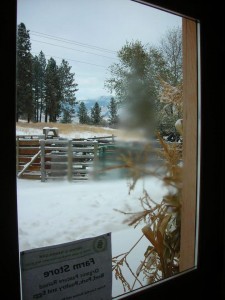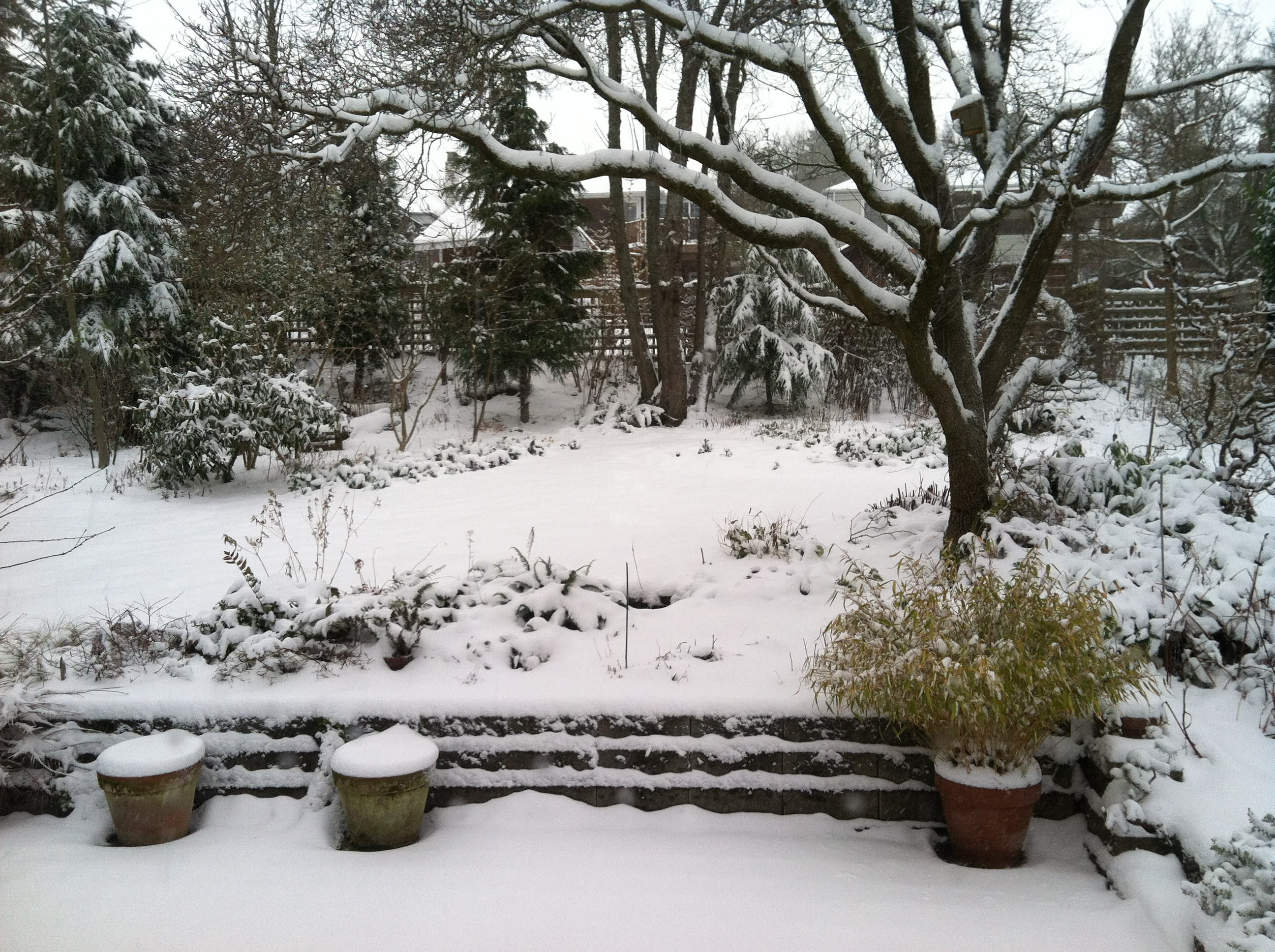
Farming north of the 48th parallel means short growing seasons and long winters. Raising meat animals rather than produce in the North means having products available for delivery almost year round. Yet when your nearest big market is 250 miles away, making winter deliveries can be hazardous.
Winter to farmers in the Northwest is just another season. You add layers, change your boots to something heavier, make sure all the animals have plenty of shelter and fresh water, and put chains on the tractor or truck. Snow is simply another element you deal with and it rarely interferes with business, school or home life.
Snow in a city like Seattle is like an invasion by a foreign army. Businesses and schools close at the hint of a flake. And when it begins to come down, those residents who must get behind the wheel do so at risk of life and limb because most drivers have only intermittent experience driving on the slippery stuff. Add the fact that most streets don’t get plowed and you have a recipe for slips, slides, bumps and crashes on nearly every thoroughfare.
Raising more than 400,000 pounds of hay and grain to produce more than 48,000 pounds of meat and 4,500 eggs on 150 acres of farmland outside Winthrop WA is no small job. And getting that meat and those eggs to customers in Seattle is challenging.

Jennifer Argraves and Louis Sukovaty, Crown S Ranch, use all sales channels available to them: direct to the consumer, buying clubs and CSAs, wholesale to food markets and restaurants, and their own farm store. Every sale and every delivery is critical to keeping the cash flowing.
Snow (and more forecast) in Puget Sound has cost this small farm a tremendous amount of time, effort, and money. While the show must go on, sometimes the meat just doesn’t get delivered. Multiple round trips – at a cost of nearly $200 per trip – and days of driving on snowy roads take their toll physically, mentally, and emotionally.
What’s the solution? It isn’t possible to move the farm closer to the city, and certainly not possible to move the customers closer to the farm. At this point, alternatives include:
Locating a cold storage hub in Seattle to store large quantities for distribution in Puget Sound.
Pros: closer to customer base, simplifies distribution
Cons: added cost, complicates inventory management, reduces ability to manage last minute orders/special requests
Sharing transportation (truck pooling) with neighboring farmers who also deliver into Puget Sound.
Pros: shared transportation cost, shared driving responsibilities
Cons: may require changes in distribution points, i.e., pick up at central locations rather than home delivery, may limit the amount of inventory that can be delivered, e.g., truck too full
Shipping via UPS or other carrier.
Pros: transportation cost relative to weight of order, home delivery simplified, reduces travel costs and vehicle maintenance
Cons: may add cost to delivery, limits products that can be shipped (do you know how to ship eggs without breaking them?), warm temperatures may make carrier delivery impossible.
As cities continue to grow and farmland moves farther and farther away, these are challenges that small family farms, which want to maintain a direct connection to their customers, will have to manage. If we don’t find ways to resolve transportation and distribution hurdles, we are doomed to getting our food through the complex, high-energy networks maintained by the conventional food system; a system controlled by only a handful of mega-producers.

